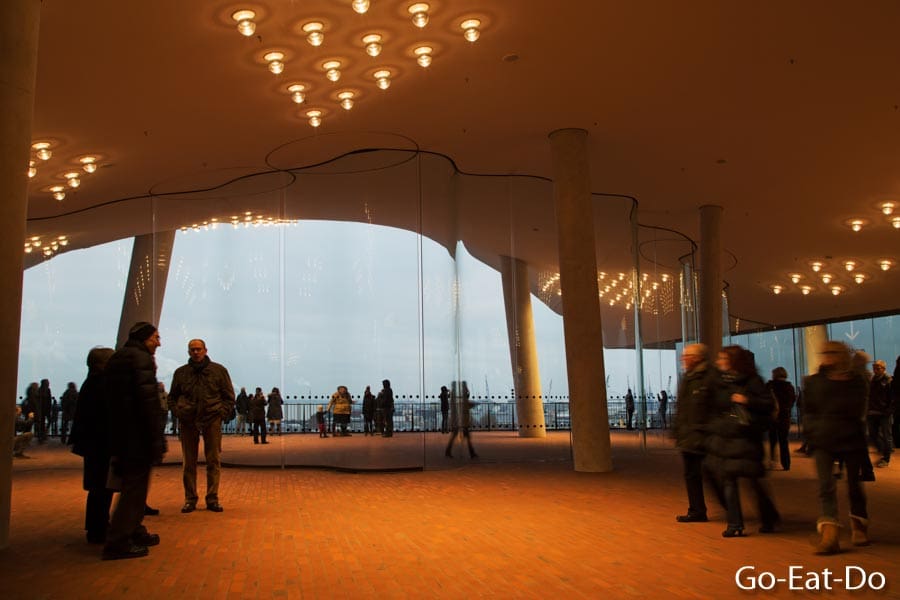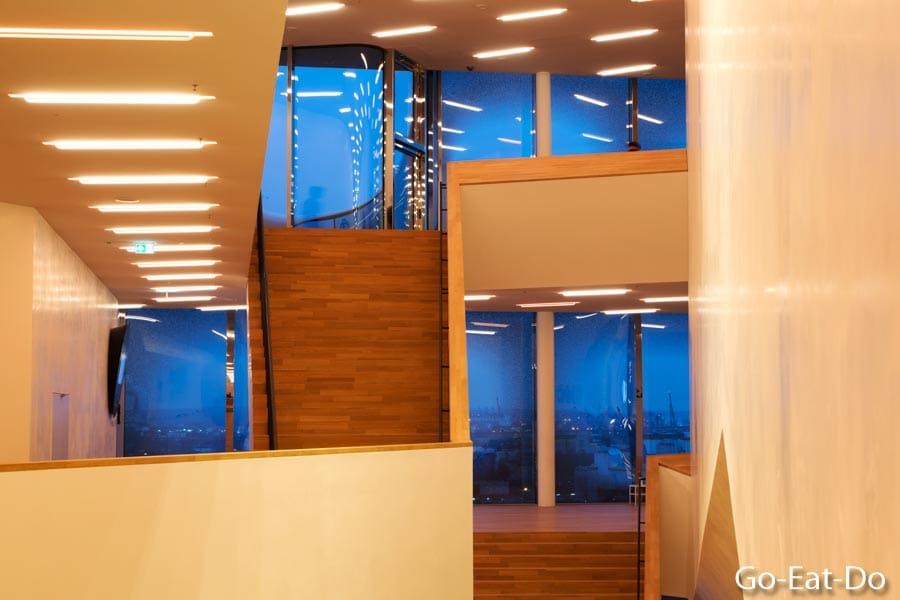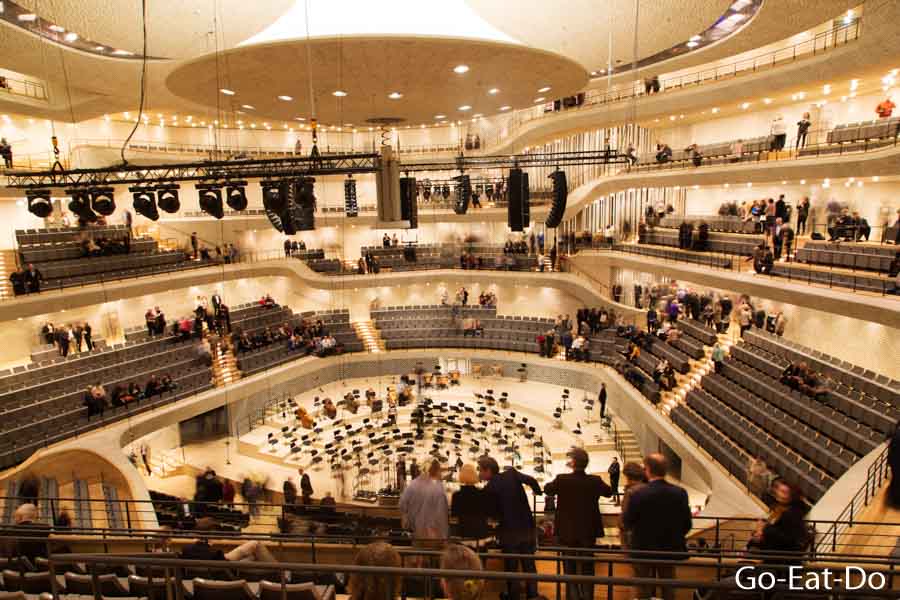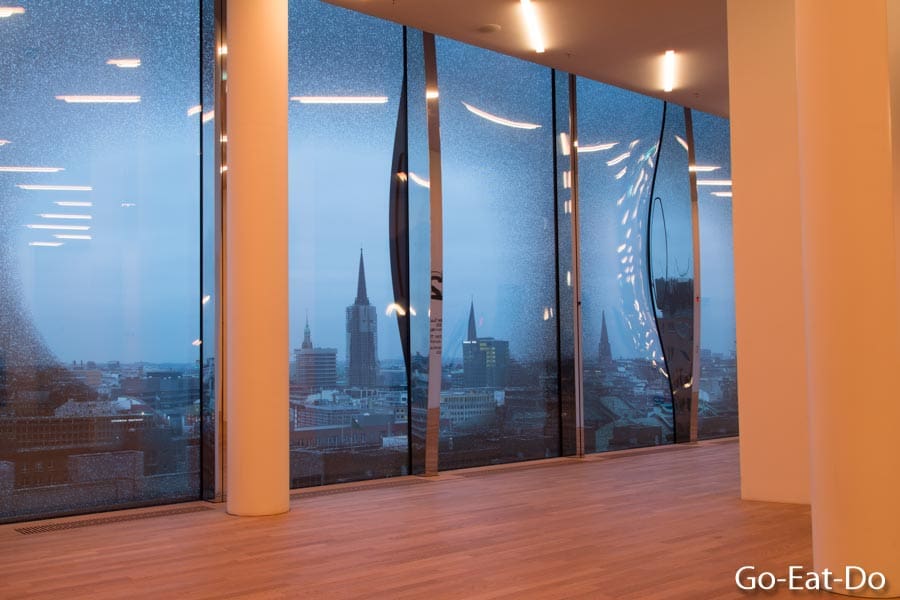Stuart Forster visits the Elbphilharmonie in Hamburg, the German city’s waterfront icon.
Paris has the Eiffel Tower, Sydney has its opera house and, of course, New York has the Statue of Liberty. In our age of social media and punchy, image-led digital communications icons have become more important than ever. The opening of Hamburg’s new waterfront landmark, the Elbphilharmonie, led to an inevitable flurry of activity on Instagram, Twitter and blogs in northern Germany and beyond.
Hamburg’s multi-functional icon hosts a 2,100-seat concert hall, a recital hall with 550 seats, a 244-room luxury hotel plus 45 upscale residential apartments. It also houses a car park with more than 500 spaces. To term the Elbphilharmonie merely a concert hall is misleading, telling only part of its story. The building’s plaza level is an attraction in its own right. The public area can be visited throughout the day and into the evening, offering an elevated viewing platform over the city and its vast harbour.
Europe’s third biggest port
The North Sea is 110 kilometres downriver from Hamburg yet the city counts as Europe’s third largest port. Even back in the Middle Ages — when sailing ships would tack with the wind to zig-zag along the River Elbe, meaning journeys to the open sea that took several days — Hamburg was an influential member of the Hanseatic League of trading cities.
The location of the Elbphilharmonie, overlooking the waterfront, is not mere chance. The port is Hamburg’s economic heart and the rise and fall of the Elbe’s tide its pulse. Though technically the harbour is not the source of its merchants’ wealth it is, importantly, the place wares are landed.
During the late 19th century, when steam had begun to power ships used in global trade, grand redbrick warehouse buildings were erected along the waterfront. The Neo-Gothic, multi-storey storage structures lend their name to the Speicherstadt district. The architecture is distinctive and unique. Along with the vast, red-brown brick office buildings of the nearby Kontorhaus district — an area of Modernist office buildings best known for the angular, ship-like façade of the Chilehaus — the Speicherstadt was inscribed as a UNESCO World Heritage Site in 2015.

Hamburg’s free trade zone
The warehouses formed part of a duty-free zone that, for more than a century, required visitors to show their passports. That requirement did not cease until after the reunification of Germany in 1991. Many visitors are surprised to learn that the Port of Hamburg’s free trade zone was not fully dissolved until the beginning of 2013.
Over recent years, largely in response to the rise of container shipping and changes in the storage of goods, several of the warehouses have been converted from their original use. The area is just a 20-minute walk from the city hall. That’s one of the reasons why Speicherstadt has become home to popular tourist attractions such as Miniatur Wunderland (the world’s largest model railway exhibition), Hamburg Dungeon (where darker aspects of Hamburg’s history are brought to life during a fun but gruesome 90-minute tour) and the Kaffeemuseum Burg (a museum conveying the story of coffee production and the role of the Speicherstadt in bean transportation and storage).
When it became apparent that the Speicherstadt would lose its function as a storage area urban planners hit upon the concept of the HafenCity redevelopment. Translating to ‘PortCity’, the project became Europe’s largest urban regeneration project. It encompasses office buildings, business spaces and residential units. When eventually completed, over a decade from now, it is projected that the HafenCity will be the home to around 12,000 people.

Part of the HafenCity
The Elbphilharmonie forms part of the HafenCity and occupies the warehouse building that was once known as Kaispeicher A. That building was constructed as a storage space for cocoa, tea and tobacco between 1963 to 1966. The concept for its redevelopment into the multi-functional building that stands at the site today was first mooted in 2003.
The architectural bureau behind the project is Herzog and de Meuron, whose eponymous Swiss founders, Jacques Herzog and Pierre de Meuron, were awarded the Pritzker Architecture Prize of 2001 — an accolade whose prestige among architects might be compared to that of the Nobel Prize for peace brokers.
Groundbreaking for the redevelopment took place in April 2007 and the building’s topping off was achieved in May of 2010. Yet the project ran into disputes and, consequently, significant delays. Hamburg’s residents joke that, for a couple of years, more lawyers than construction workers earned a living working on the Elbphilharmonie. Costs to the city soared way beyond original estimates, rising to €789m ($841m). On 31 October of last year, a final inspection and acceptance of the building took place. There was relief as well as joy when the first concert was held on 11 January.
A concert hall and more
Hamburg’s waterfront heritage played a significant role in the design of the concert hall, as did the Elbphilharmonie’s role as a hotel and place of residence. To prevent industrial noises such as ships’ horns from disturbing performances the hall is isolated from the building’s superstructure. Ingeniously, 362 springs connect the outer shell of the concert hall with the Elbphilharmonie’s reinforced concrete ribs.
Yasuhisa Toyota, the renowned Japanese acoustician, fine-tuned the design of the concert hall. Its acoustics are regarded among the world’s best. Patterns on panelling around the walls play a role in achieving that, as does the oval reflector — with a diameter of 15 metres and a weight of 24 tonnes — that is suspended above the central performance space. No member of the audience in the Elbphilharmonie’s Grand Hall is ever more than 30 metres from the conductor and a 4,765-pipe organ, designed and built by the Bonn-based company Klais, forms an integral part of the chamber.

The NDR Elbphilharmonie Orchestra
Among the regular performers are members of the NDR Elbphilharmonie Orchestra. The long-established ensemble of professional musicians was previously known as the NDR Symphony Orchestra until taking up a new home in the waterfront building, whose highest point stands 110 metres above ground level.
Symbolic of the sea’s role in shaping Hamburg’s fortunes, the rooftop takes the form of the peaks and troughs of waves. Now that the Elbphilharmonie is open locals are hoping that it will be clear sailing ahead for the city and that its new icon will play a significant role in drawing overseas visitors — both by sea and by air — to Hamburg.

The Elbphilharmonie at a glance
Here are 10 impressive facts about the Elbphilharmonie:
- The building has a total floor area of 125,512 square metres.
- 18,000 tonnes of steel were used to construct the building.
- The roof alone weighs 700 tonnes.
- In total, the Elbphilharmonie weighs approximately 200,000 tonnes.
- The plaza level is at a height of 37.20 metres.
- The longest side of the Elbphilharmonie, its southern aspect, measures 125.90 metres.
- Approximately 10,000 shaped gypsum fibre panels clad the inner wall of the concert hall.
- Around 8,000 sequins adorn the curved escalator at the main entrance of the Elbphilharmonie.
- The façade bears 2,200 panes of glass, of which 595 are curved, covering 16,000 square meters.
- A 520-space car park stands beneath the Elbphilharmonie.

Further information
For a full listing of concerts and events, see the Elbphilharmonie website.
The Westin Hamburg hotel (Platz der Deutschen Einheit 2, Hamburg 20457; tel: +49 (0) 40 8000 1000) is located inside of the Elbphilharmonie. Rooms with panoramic views are available from the ninth to the 19th floor of the hotel.
Find out more about the city’s attractions on the Hamburg tourist information website. The German National Tourist Board website has information about attractions in Hamburg and beyond.
Photos illustrating this post are by Why Eye Photography. Call 07947 587136 to commission a shoot.
If you enjoyed this post why not sign up for the free Go Eat Do newsletter? It’s a hassle-free way of getting links to posts on a monthly basis.
‘Like’ the Go Eat Do Facebook page to see more photos and content.




Lucy Watt
August 7, 2017 at 08:00Hamburg is on our wish list of cities to visit precisely because of this building. It looks a super place .
Stuart Forster
August 7, 2017 at 08:03Take a walk through the Elbtunnel or a harbour cruise and enjoy great views of the building.